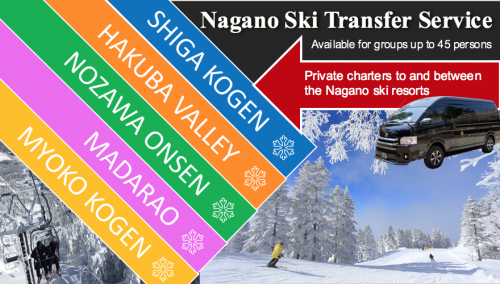The Complete Guide to Transportation Options for Tourists in Japan
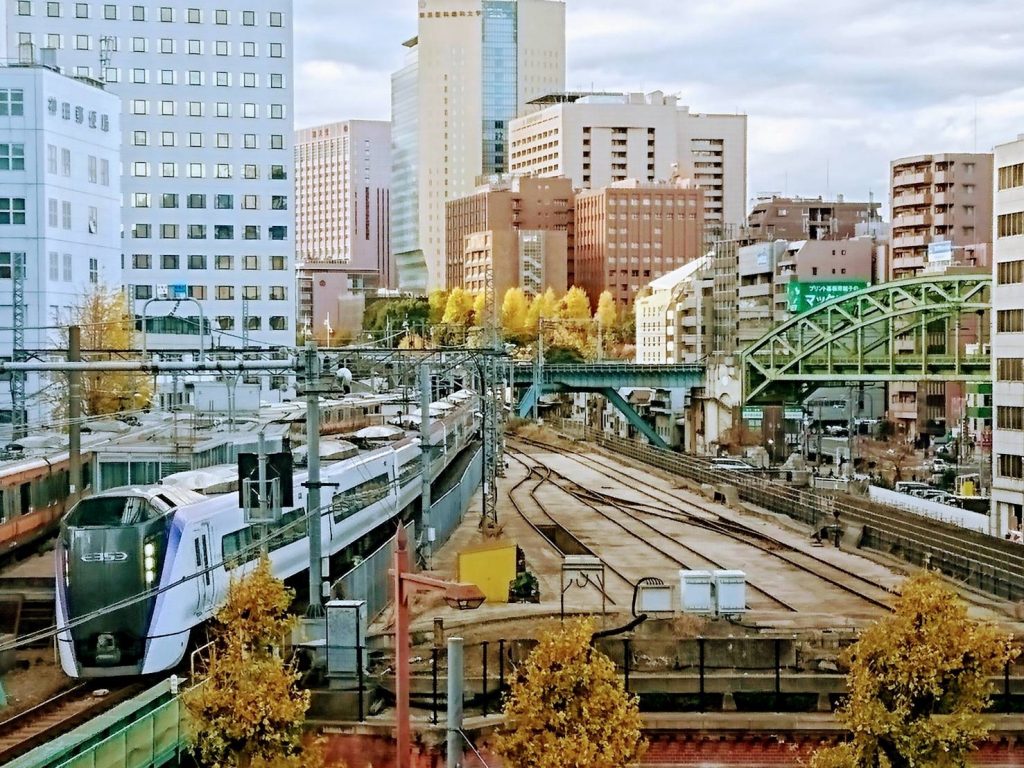
Even if you’re yet to set foot in Japan, chances are that you’ve already heard about the efficiency of its transport network. In addition to trains, travelers also have plenty of options to move around Japan using domestic airlines, express/highway buses, and the country’s excellent road system using rental cars.
On this page you will find the following information:
— Overview of Japan’s Rail Network
— Types of Train Services in Japan
— Using the Trains: Ticketing, IC Cards & Japan Rail (JR) Passes
— Using the Trains: Navigating Stations, Platforms & Seating
— Driving in Japan: Requirements & Car Rental
— Driving in Japan: Expressways, Tolls & ETC
For further essential travel information, see our ‘Plan Your Visit’ main page.
OVERVIEW OF JAPAN’S RAIL NETWORK
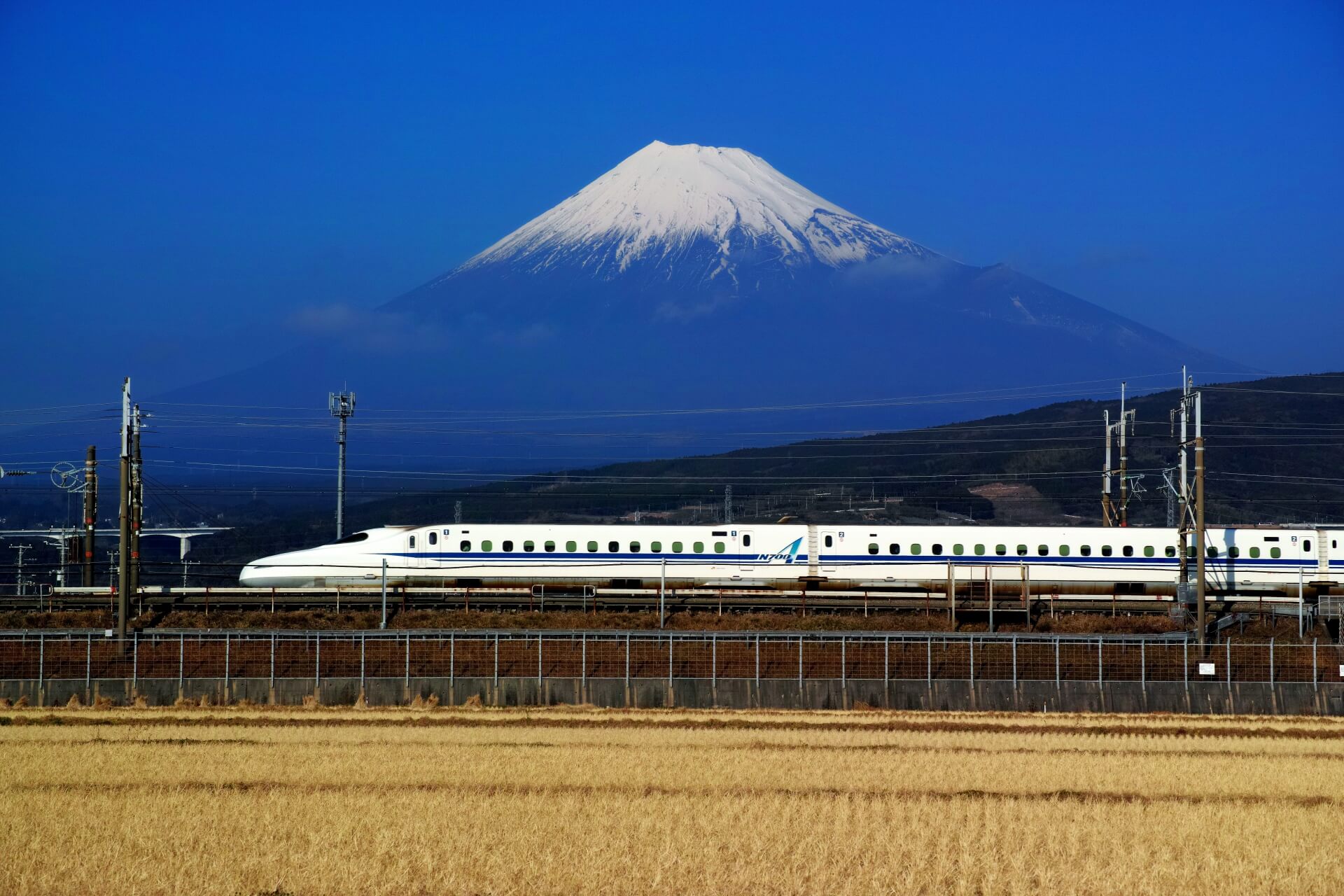
Where do you begin when attempting to describe and summarise Japan’s rail network? Most simply stated it is huge, it works and it is almost always on time. Basically, it is amazing and arguably the best rail network in the world. Boasting more than 8500 stations and more than 30,000km in tracks, the sheer scale of the network is hard to fathom and when you consider that the system really works, with most trains being exactly on-time all the time, it really is a marvel of Japanese ingenuity and sheer hard work.
The overall system is operated by Japan Railways Group organized into six regional passenger operators – responsible for the iconic ‘Shinkansen/Bullet Train’ network and countless other intercity and local services – and a nationwide freight operator. Those six regional operators are:
Central Japan Railway Company / JR Central: operates the Tokaido Shinkansen and numerous regional services in Kanto and Kansai.
East Japan Railway Company / JR East: services include the Hokuriku Shinkansen (in conjunction with JR West), Joetsu Shinkansen, Akita Shinkansen, Yamagata Shinkansen and Tohoku Shinkansen and numerous regional services.
West Japan Railway Company / JR West: operates the Sanyo Shinkansen, Hokuriku Shinkansen (in conjunction with JR East) and numerous regional services in Kansai and Kyushu.
Hokkaido Railway Company / JR Hokkaido: operates the Hokkaido Shinkansen and regional services on Japan’s most northern island.
Shikoku Railway Company / JR Shikoku: operates the regional services on Japan’s least populated main island.
Kyushu Railway Company / JR Kyushu: operates the Kyushu Shinkansen and regional services in the south of Japan.
The division of the rail network into its constituent operators does not affect passengers and you can travel across the entire network using a common ticketing system and without needing to change trains (as many services cover more than one region). In addition to the operators above, multiple private and regional rail lines exist throughout Japan. Some are covered by JR ticketing while others are not.
TYPES OF TRAIN SERVICES IN JAPAN
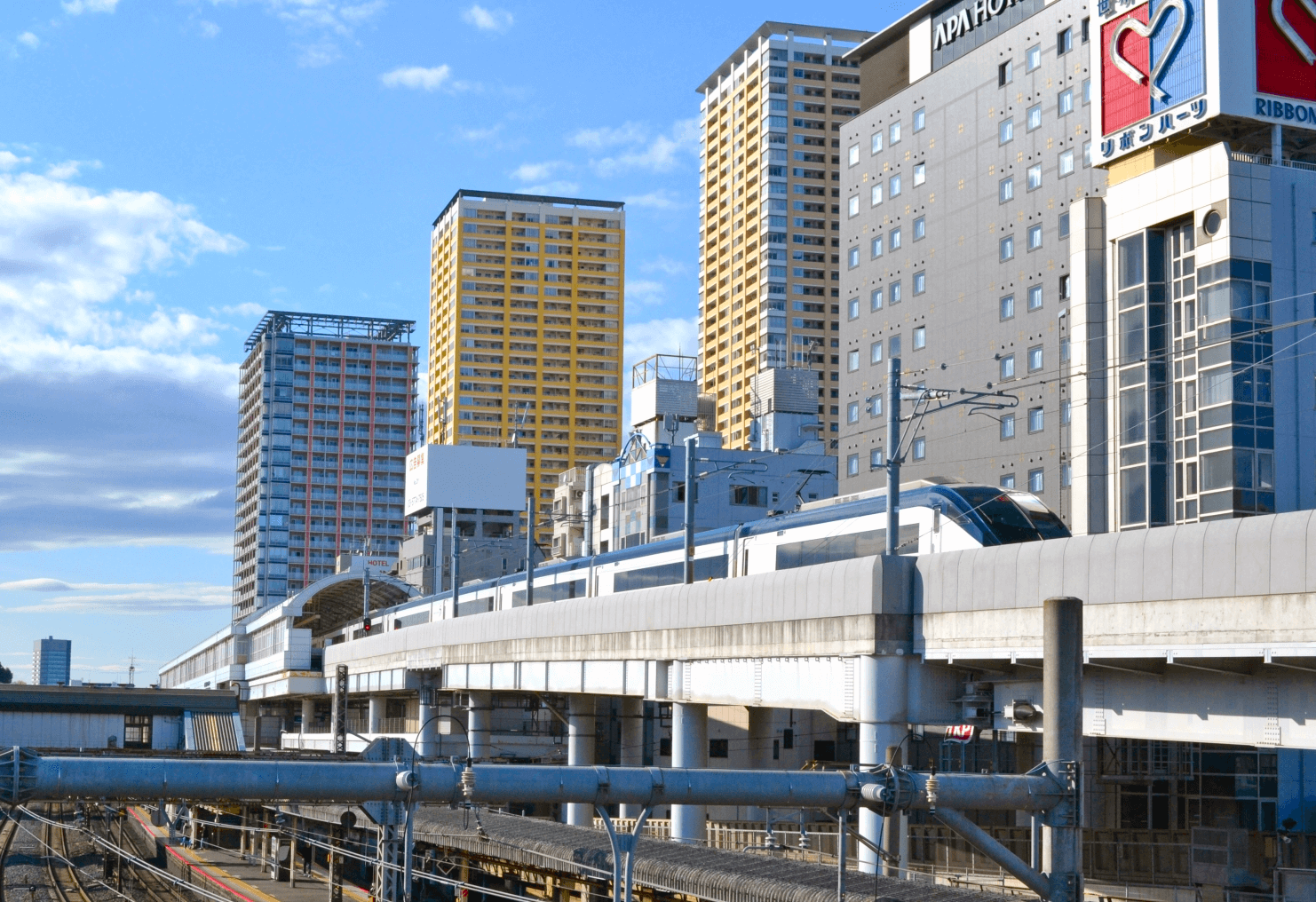
Across the network there are numerous types of services but generally-speaking they can be divided into the following:
Shinkansen services: often referred to as the ‘Bullet Train’ network, Japan’s iconic shinkansen network spans-out from Tokyo and now stretches all the way to Hokkaido in the north and Kyushu in the south. The super-rapid services continues to be expanded with current lines being extended and ongoing development and construction of the even fast ‘MagLev’ (magnetic levitation) shinkansen capable for around twice the speed of the current train and due to be in service before the end of the decade. But for the time being you’ll have to put up with speeds of just 300km per hour. Operating on their on tracks – often raised and behind concrete barriers, the shinkansen is very fast but you often have a limited view of the landscape you are moving through.
Express/Limited Express/Rapid services: shinkansen services aren’t the only fast ones in Japan! Numerous express, limited express and rapid services zip across the country stopping at major hub stations and skipping smaller stations, connecting cities and regions quickly and comfortably. Services often notably cheaper than the shinkansen and using the same tracks as regular services, you can often see more from these trains than you can from the shinkansen. This category includes a number of rapid services running to the major airports.
Local services: countless local services operate throughout Japan including within its largest metropolises and connecting even the smallest of towns and villages to the overall network. Some of these lines are among the most picturesque in Japan and while slow, offer visitors are great way to not just travel through but experience the country.
Underground/metro services: Japan’s largest cities including Tokyo, Yokohama, Osaka and others have large underground networks that connect to the above ground system. Services on underground lines operate frequently and can be extremely busy during the morning and evening peak periods however outside of those times, is typically comfortable to use. The systems are clean and safe at all times of the day.
Tourist/Scenic Railways: Japan boasts small beautiful railway lines operated purely for sightseeing. Most of these originally served a purpose as mountain railways for the timber or other industries but are now valued and operated purely for the experience they offer. You will find many across Japan – highly recommended.
THE ‘SHINKANSEN’ NETWORK
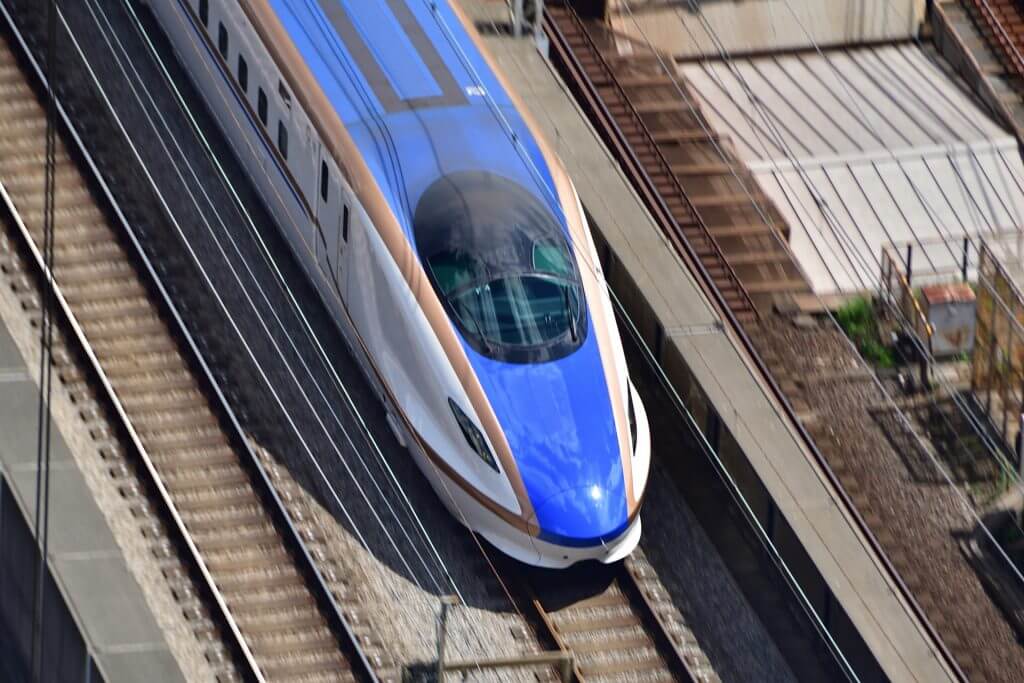
Spanning the length of the country, Japan’s ‘Shinkansen’ or ‘Bullet Train’ network makes moving around quick and comfortable. There are seven shinkansen lines all covered by one ticketing system:
Tokaido Shinkansen: runs from / to Tokyo west to Shin-Osaka with major stops also including Nagoya and Kyoto.
Hokuriku Shinkansen: runs from / to Tokyo north-west to Kanazawa with major stops including Karuizawa, Nagano and Toyama.
Joetsu Shinkansen: runs from / to Tokyo north to Niigata with major stops including Echigo-Yuzawa.
Tohoku Shinkansen: runs from / to Tokyo north-east to Shin-Aomori with major stops including Sendai and Morioka and the Yamagata Shinkansen and Akita Shinkansen branch lines running to Yamagata and Akita respectively.
Hokkaido Shinkansen: runs from / to Shin-Aomori north to Shin-Hakodate-Hokuto (does not yet reach Sapporo).
San’yo Shinkansen: runs from / to Shin-Osaka west to Hakata (Fukuoka) with major stops including Okayama and Hiroshima.
Kyushu Shinkansen: runs from / to Hakata (Fukuoka) south to Kagoshima-chuo.
USING THE TRAINS: TICKETING, IC CARDS & JAPAN RAIL (JR) PASSES
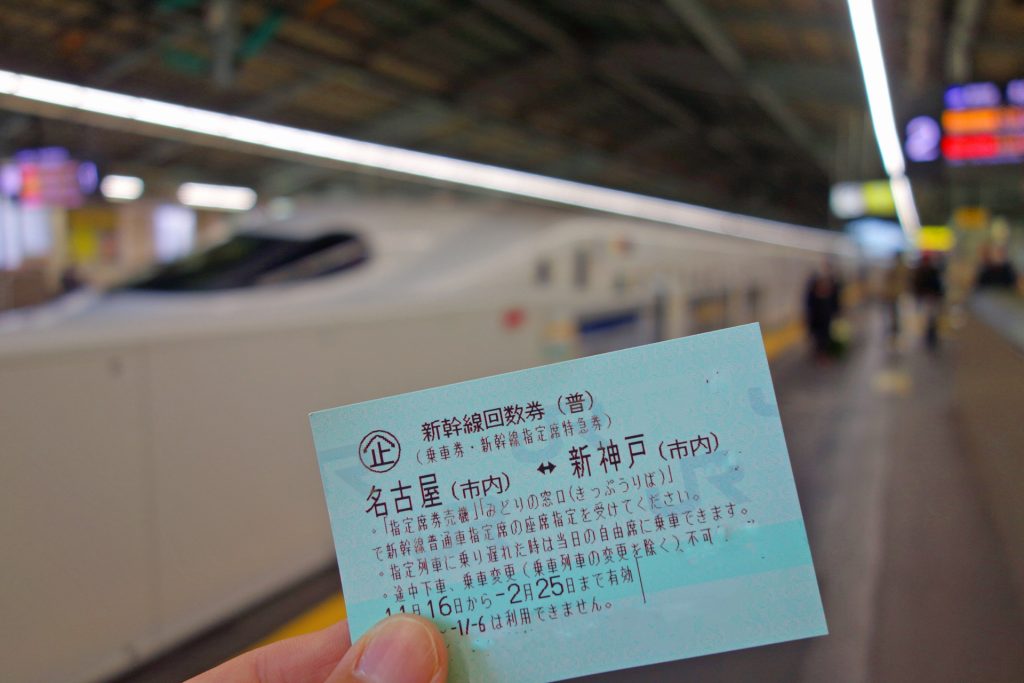
There are multiple options for purchasing tickets to use the train system including several rechargeable cards and multi-use passes. To learn about when to choose a paper ticket vs an IC Card or a JR Pass, read our article linked below.
USING THE TRAINS: NAVIGATING STATIONS, PLATFORMS & SEATING
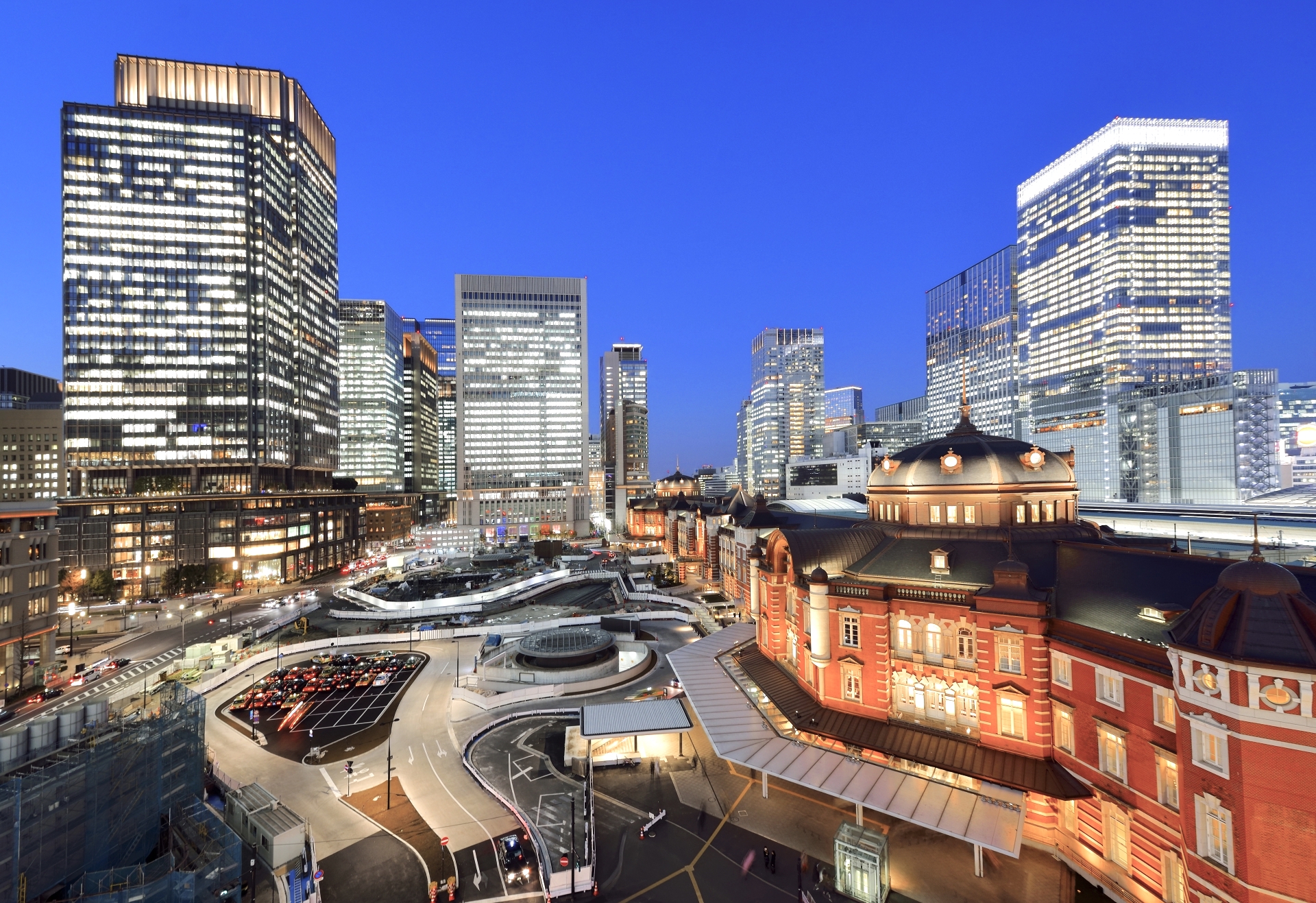
The ease of using the train system, especially navigating the stations, depends very much on which station we are talking about. Japan is home to most of the world’s largest and busiest train station including Shinjuku and Shibuya in Tokyo or Umeda in Osaka, which even Japanese who have lived in those cities their entire lives can still find confusing. Navigating those stations, particularly during the morning and evening peak periods, can be very challenging – especially if you’ve just come-off a long flight and carrying luggage! However, those are the exceptions. Outside of cities such as Tokyo, Yokohama, Kyoto and Osaka, train stations are typically much smaller and pretty easy to find your way through. And even if you have to tackle Shinjuku at peak hour, just embrace the experience and be thankful you don’t have to do it every day on your way to and from work! Here are some tips for getting to where you need to:
Entrances/Exits
Some stations are huge so it pays to keep track of which entrance or exit your used, if you need to get back to the same point. This is especially the case in stations such at Shinjuku, Shibuya, Ikebukuro, Tokyo, etc. that have expansive underground networks of walkways, shops and restaurants in which everything tends to look the same. Don’t rely of remembering where you came from or recognising it again. If you need to get back to where you came from, take a photo which you can use to show it to someone and ask for help if you’re completely lost.
Walking distances
Stations such as Shinjuku in Tokyo or Umeda/Namba in Osaka are truly massive and connect to other stations via underground walkways and shopping arcades. Within the station itself, platforms can at times be located so far away it feels as though you are walking to another station completely. When switching lines at the large stations, be aware that you might need to walk a reasonable distance and allow plenty of time to do so.
Finding the right line
Larger stations are likely to be split over multiple levels with specific lines and services only accessible from specific areas. In small to mid-size stations it should be easy to find the line you need however in the larger stations, this is another challenge. To find where you need to go, look up. There will be signs above you – in both Japanese and English – directing passengers to the line they need using colours and arrows. Follow these and you should be able to get to where you’re going without too many problems.
Seeking assistance
Any larger station will have a tourist information office and numerous station attendants. The exact location of the office along with station attendant counters will vary but they should be relatively easy to spot. Staff are also endlessly helpful so don’t hesitate to ask station attendants for help should you need it.
Coin lockers
Most stations will have coin lockers for luggage storage. In small to mid-sized stations there might only be one bank of lockers making them easy to find again however in larger stations such as Shinjuku or Tokyo, there will be many areas with lockers dotted throughout the station. Make sure to pay close attention to which one you have used and again, take a photo of the area and number/name of the locker area.
Accessing Platforms
Once you’ve found the line you need, simply pass through the ticket gates into the paid zone. If you have a paper ticket, you will need to enter this into the slot and make sure to collect it on the other side. If you have an IC Card, simply tap it on the pad and pass through. If you are using a JR Pass, show it to the station attendant at the window and they will waive you through. If you have a paper ticket and try to enter the wrong line, the ticket will not be accepted and come back to you. However, when using an IC Card or JR Pass the system or station attendant doesn’t know where you are headed so it’s easier to enter the wrong zone by accident – so be careful to make sure you’re heading toward the correct line.
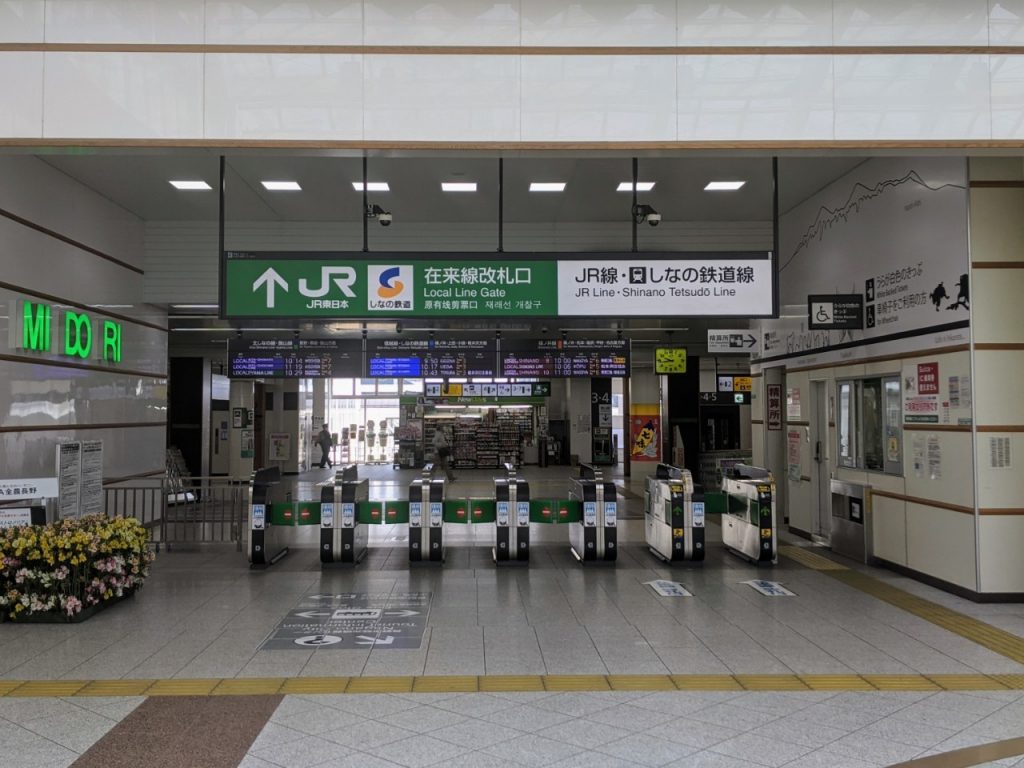
Once inside the paid-zone, you will see the board listing arrivals and departures. This typically alternates between Japanese and English making it easy to understand and listing the platform. From there, escalators and elevators leading to each platform should be clearly marked and easy to find.
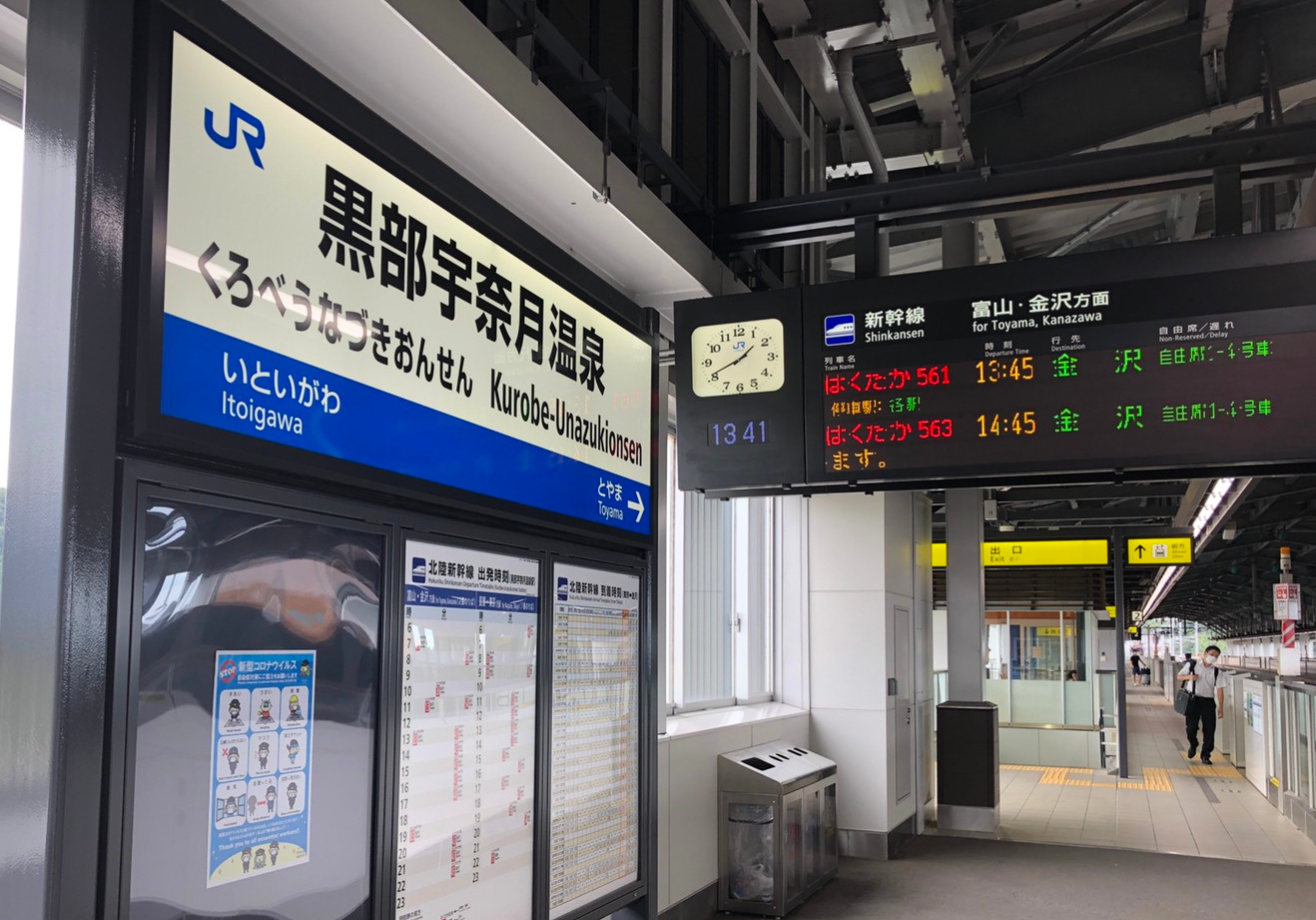
Once on the platform, you should again see alternating displays in Japanese and English. Most stations do not have barriers separating the platform from the track and platforms can be crowded, so be mindful of people around you. Highly-visible yellow paving marks the line behind which you are asked to stand for your safety while markings on the platform often show where the doors will be when the train stops. Japanese line-up to the side of the doors to allow passengers to disembark before they board. Even in very busy stations, you are still expected to line-up and board the train in order.
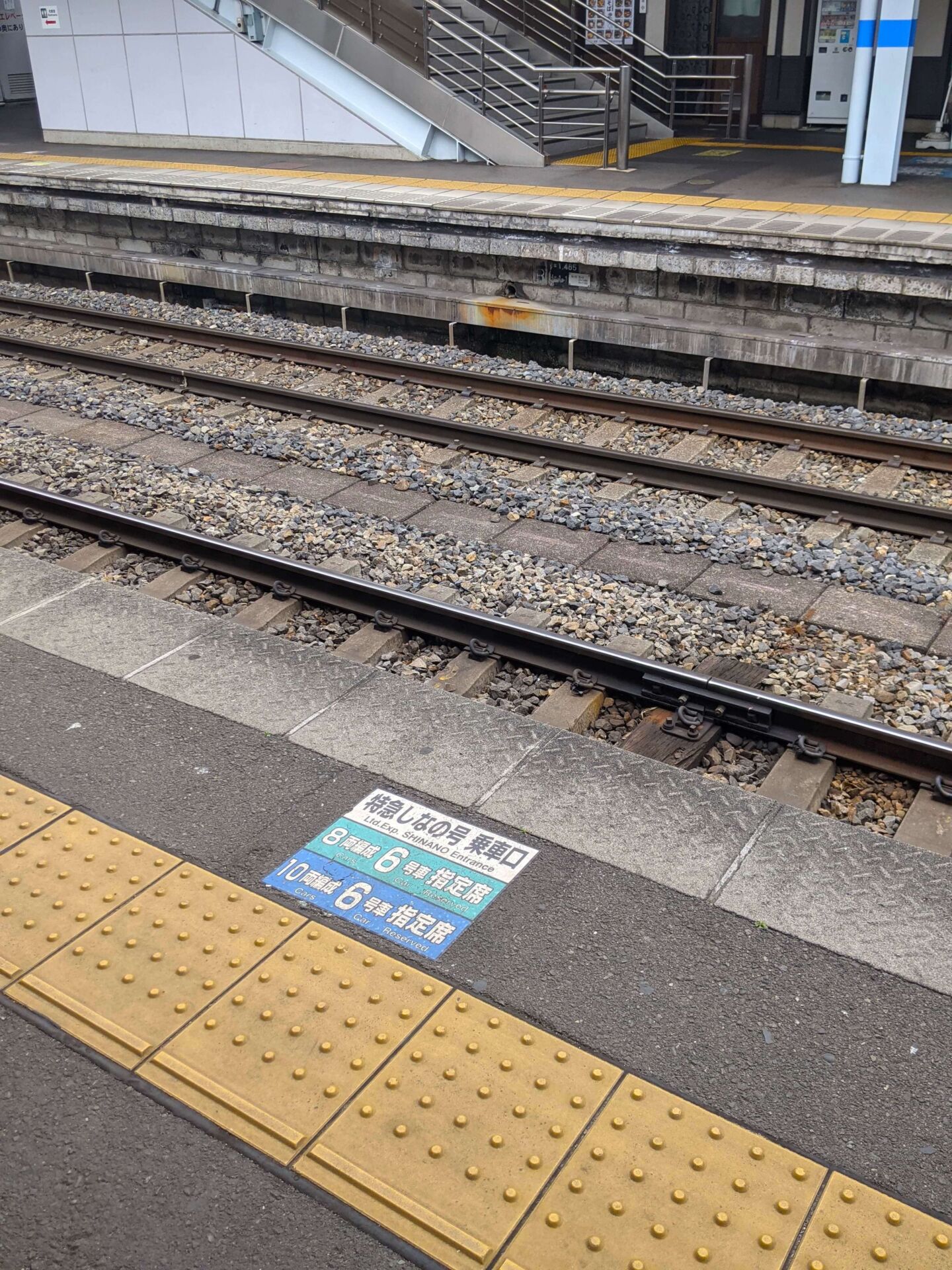
For shinkankansen and other rapid services, the markings on the platform will usually also indicate the position of each numbered carriage, allowing you to line-up in the correct spot if you have a reserved ticket. If you get this wrong, no need to worry. Just board the train on any carriage and walk through to your specified carriage/seat.
Seating
On regular inner-city services, all seating is non-reserved allowing you to sit wherever you like. Areas in each carriage – typically at either end – will be allocated for the elderly, pregnant and mobility/vision-impaired passengers. Anyone can sit in these seats but if you do not fall under one of those categories, you are expected to give-up your seat if someone needs it. Some inner-city trains and most rapid/express/limited express trains will also have a ‘Green Car’. These carriages are clearly marked with a green clover and the layout and seating is obviously different. All seating in these carriages is reserved and if you do not have a ticket, you cannot use them. Shinkansen services are split into Ordinary, Green Class and Gran Class carriages*. Ordinary cars are divided into non-reserved and reserved carriages while all seating in Green and Gran Class is reserved.
*Please note, not all shinkansen services have Gran Class.
EXPRESS / HIGHWAY BUSES
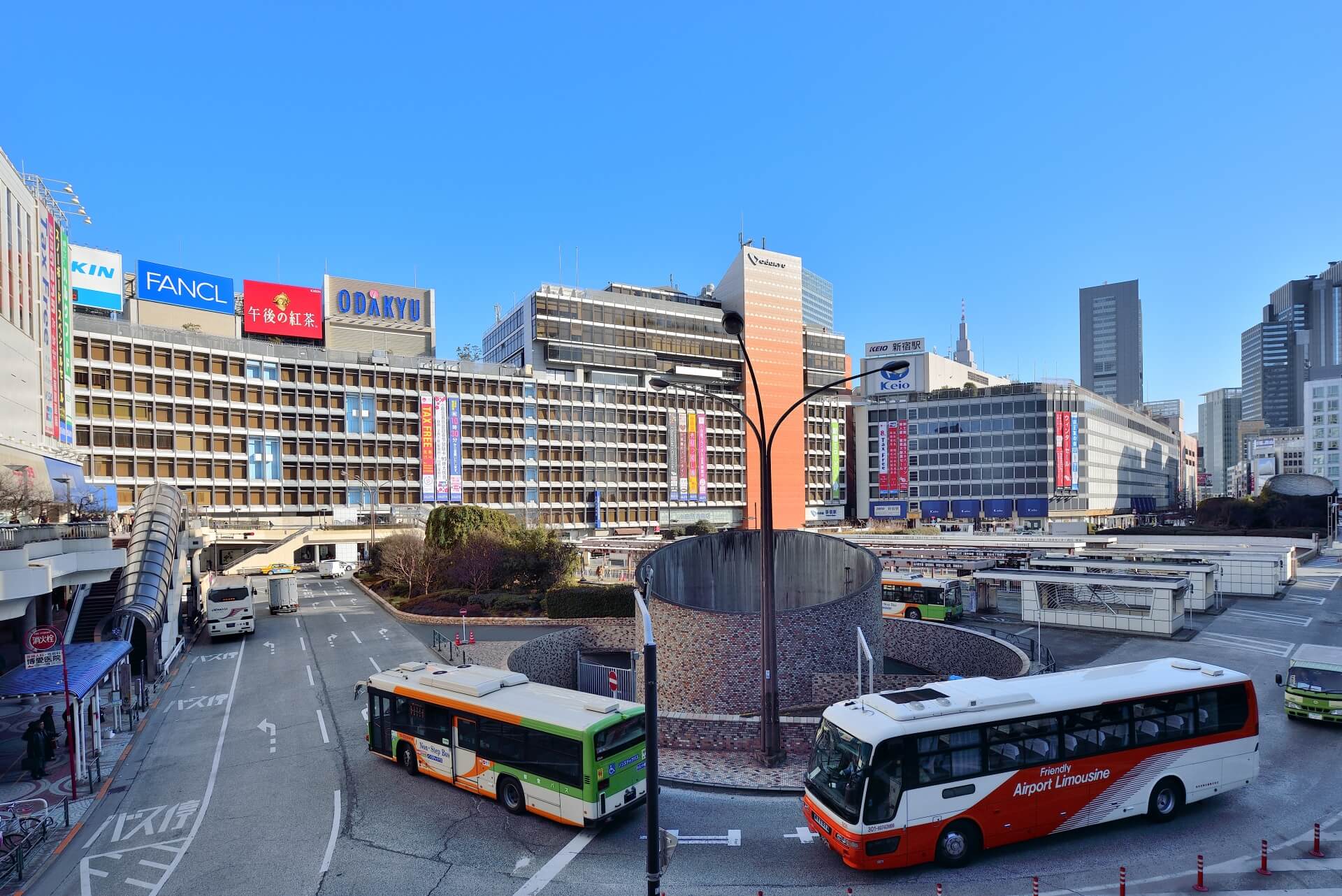
Japan has a very good network of express and highway buses that offer a cheap option that the trains for covering long distances. Bus services are of course much slower but fares can be extremely cheap and when you consider the option of using an overnight bus rather than pay for an additional night of accommodation, using an express/highway bus will be an attractive option for some travelers. There are numerous routes and all large to mid-size cities will have at least one bus company offering services. Strict regulation in Japan means that operators are typically reputable and services are safe and comfortable. Indeed, some services are amazingly comfortable with large, reclining seats, entertainment systems and lots of privacy. Some of the most popular companies include:
Willer Express: as the leading discount bus operator in Japan, Willer Express has a presence all over the country as is very reliable. Buses are well-appointed and comfortable and for international visitors, Willer’s ‘Japan Bus Pass’ offers an attractively cheap alternative to the JR Pass. Willer’s booking website is easy to use and also includes some services operated by other companies.
JR Buses: speaking of JR, the JR Group operates eight regional bus companies which connected into a nationwide network of express and highway buses. While not as cheap as companies such as Willer, one advantage of using JR buses is that ticket can be purchased at ticket offices inside major train stations. For more information about available services, check the website for check company: JR Kanto Bus / JR Tokai Bus / JR West Bus / JR Chugoku Bus / JR Shikoku Bus / JR Tohoku Bus / JR Kyushu Bus / JR Hokkaido Bus.
The ‘Japan Bus Online’ website is available in English including booking of express and highway bus services throughout Japan.
Relax and Travel Stress-free with a Private Charter Bus
While we are talking about busses, we would be remiss if we didn’t mention our own private charter busses and vehicles.

Based in Central Japan and operating all year round, we are a fully-accredited charter operator with the expertise to ensure your journey is safe, comfortable and convenient. With vehicles suitable for single travelers, couples and families to groups of up to 45 people, we have you covered for pickup and drop-off anywhere in the Nagano region including to and from its most popular ski resorts, other popular destinations including the monkey park and more distant points including Nagoya, Tokyo and its airports. For price listings for the areas we cover, click on the link below.
AIRPORTS & DOMESTIC FLIGHTS
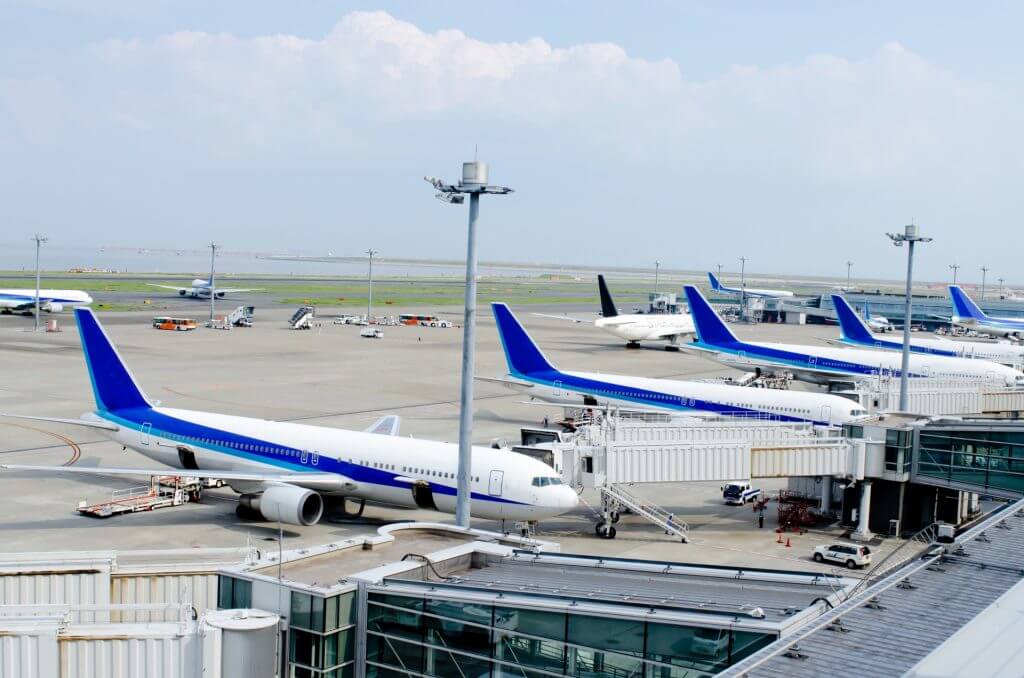
Given the efficiency of Japan’s rail network, it might not spring to mind that flying domestically can also be a good option. In recent years the introduction of multiple low-cost carriers (LCCs) to the market means that prices are more competitive and in some cases, flying is a good alternative to using trains or the only option – for example if you want to head down to Okinawa or get from one end of the country to the other quickly, then flying is your only option.
Japan’s four major international airports – Narita Airport and Haneda Airport in Tokyo, Chubu Centrair Airport in Nagoya and Kansai Airport in Osaka – also have domestic terminals. There are many smaller airports dotted throughout Japan most of which only facilitate domestic routes although some also have limited international services. Some of the more convenient popular airports include: Naha Airport in Okinawa; Fukuoka Airport and Kagoshima Airport in Kyushu; Komatsu Airport near Kanazawa; Toyama Airport in Toyama; Matsumoto Airport in Nagano; and New Chitose Airport servicing Sapporo and the ski fields of Hokkaido.
Airlines typically maintain modern fleets of aircraft and Japan has a good safety record. In terms of full-service airlines, Japan has two airlines operating in the domestic market:
All Nippon Airways (ANA)
All Nippon Airways lays claim to being Japan’s largest airline in terms of passenger numbers and revenue. Based in Tokyo, ANA covers numerous domestic and international routes, operates multiple subsidiary/regional carriers and has codeshare agreements with around forty international airlines. As a full-service airline, flying on ANA will cost more than LCCs but many, many passengers are happy to pay the price for better service and their range of routes.
Japan Airlines (JAL)
As Japan’s flag carrier, Japan Airlines covers numerous domestic and international routes and has codeshare agreements with around forty international airlines. JAL has a ubiquitous presence throughout Japan and as a full-service airline, flying on JAL typically includes a much higher fare the LCCs listed below however in the end, you get what you pay for in terms of service and convenience.
Recent years have seen an influx of low cost carriers (LCCs) into the market, the largest of which are:
Jetstar Japan (JJP)
Based at Narita Airport, Jetstar Japan services around twenty destinations in the Asia-Pacific region including Tokyo, Sapporo, Fukuoka, Naha, Nagasaki and more and in numerous international destinations in Australia, China, Indonesia, Malaysia, New Zealand, the Philippines, Singapore, Sri Lanka, Thailand and Vietnam and has codeshare agreements with American Airlines, Japan Airlines and Qantas.
Peach Air (APJ)
The largest LCC operating in Japan, Peach Air is based in Osaka and flies both domestic and international routes. Domestic destinations include Tokyo, Fukuoka, Kagoshima, Nagasaki, Naha, Osaka, Sapporo and both Narita and Haneda Airports in Tokyo. Internationally, Peach also flies to Bangkok, Hong Kong, Shanghai, Seoul, Taipei and other destinations.
Both airlines operate numerous routes and often offer much cheaper fares than the historically dominant ANA and JAL. In addition to Jetstar and Peach, smaller LCCs operating in Japan include:
Air Do (ADO)
Operating out of Hokkaido, Air Do connects Tokyo to Sapporo and other destinations including Asahikawa, Memanbetsu, Kushiro, Obihiro and Hakodate.
Skymark Airlines (SKY)
Based at Haneda, Skymark Airlines operates to destinations including Tokyo, Sapporo, Kobe, Fukuoka, Kagoshima and Naha.
Solaseed Air (SNJ)
Operating out of Kyushu, Solaseed Air flies to Tokyo and covers multiple destinations in southern Japan including Kumamoto, Nagasaki, Kagoshima, Oita and Miyazaki.
StarFlyer (SFJ)
A self-declared ‘hybrid’ airline, StarFlyer is based at Haneda and occupies a space between competing LCCs and full-service airlines such as ANA and JAL. Domestic destinations include Tokyo, Nagoya, Osaka, Fukuoka and Naha while international destinations include Guam, Hong Kong, Seoul and Taipei.
DRIVING IN JAPAN: REQUIREMENTS & CAR RENTAL

Given the efficiency and coverage of Japan’s public transport network, renting a car may not seem necessary or a good option. However, even Japan’s transport network as its limits and renting your own car is a great way to explore regional and remote places not easily reached using the trains, buses and planes. To drive in Japan you must:
— be 18 years of age or older, and
— have a valid Japanese drivers license, or
— have a valid drivers license in your home country and a valid international drivers license*
It is important to note that if you do not have a Japanese drivers license, you cannot drive in Japan unless you are also carrying a valid international license – even if you have a valid license in your home country. To obtain one, you will need to apply and have it issued before traveling to Japan. The process and cost varies by country so check with your local/national automotive association for further details.
*Nationals of Belgium, Estonia France, Germany, Monaco, Switzerland and Taiwan are not eligible for an international drivers license. Agreement between those countries and Japan means that those nationals can drive in Japan on the drivers license issued in their home country as long as they are also carrying an official Japanese translation of it.
Driving in Japan
Japan drives on the left-hand side of the road meaning that for people coming from Australia, Malaysia, India, Indonesia, New Zealand, Pakistan, Thailand, the United Kingdom and several other countries in Africa, South America and the Caribbean and Pacific Islands, things will be immediately familiar. All other nationals should be mindful of that change from the right to left and proceed with caution as you get used to it. The rules of the road are generally easy to follow and Japanese are typically courteous and polite drivers. It’s rare to see any aggression and even if you make a mistake, most Japanese won’t react and allow you space and time to move on. Pay attention on the expressways however as some drivers speed in the right-hand lane and can be impatient if they think you are driving too slow.
Driving in large cities such as Tokyo, Yokohama and Osaka can also be stressful given the size and complexity of the roads. Even the expressways in the cities – typically easy to navigate with the helpful of your GPS/Navi – can confusing as they weave their way through the largest cities. Off the expressways, you also encounter a lot of one-way roads and lanes that can only turn or go straight in built-up areas. Even with a GPS/Navi, this can also be confusing and a little stressful to navigate.
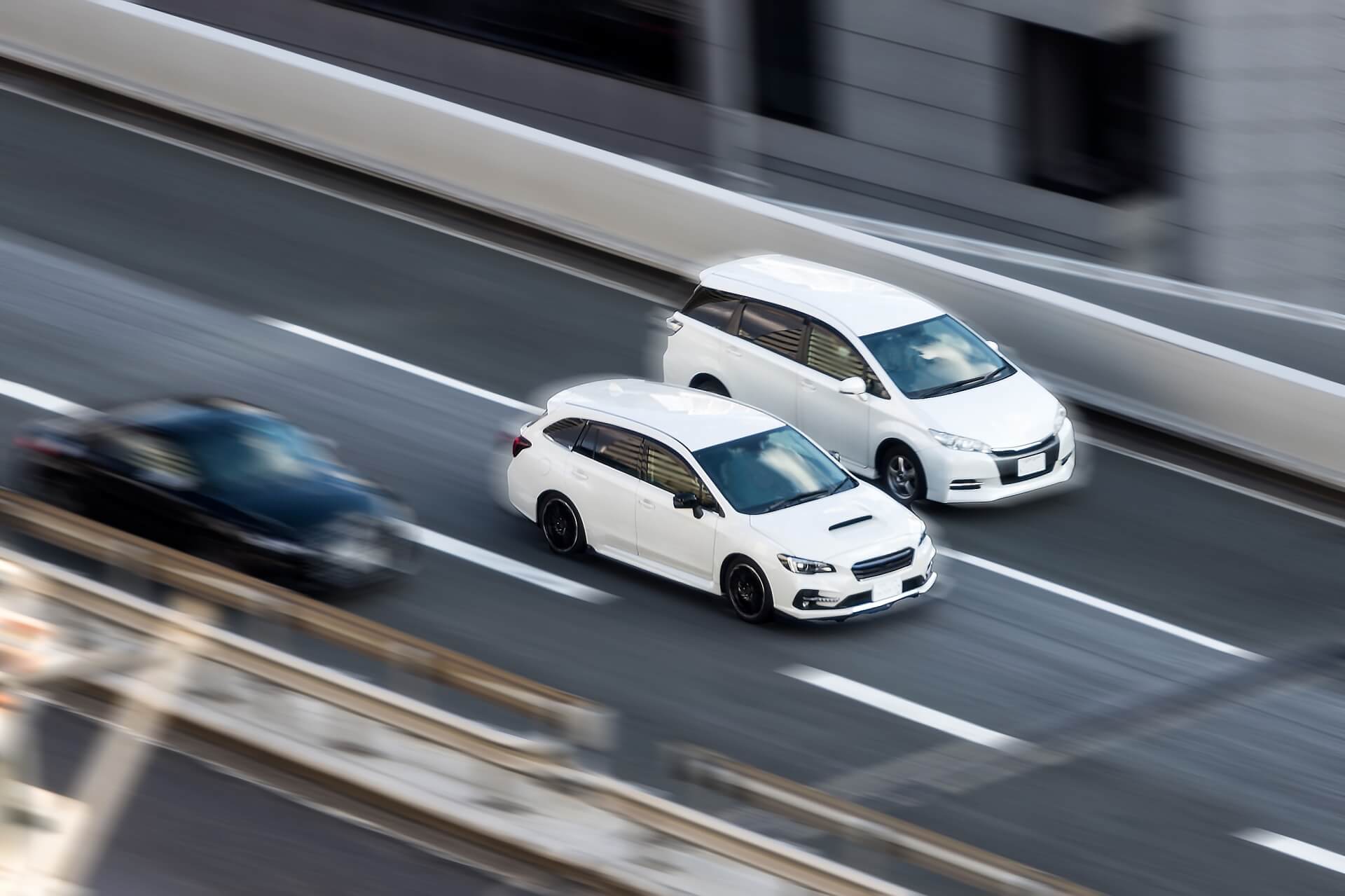
Away for the cities, Japan is a pleasure to drive around. Roads are usually well-maintained and as already noted, most Japanese are courteous and polite drivers. As a long, narrow island-nation with lots of mountains, Japan boasts countless scenic drives that can in themselves be fantastic travel experiences.
Car Rental Companies
There are many rental companies operating in Japan including Toyota Rent-a-car, Nippon Rent-a-car, Nissan Rent-a-car, Orix Rent-a-car and Times Car Rental. International rental companies including Budget, Avis and Hertz also have a presence while Japan Rail operates JR Rent-a-car – a good option for many international visitors as their office will be at or nearby a train station and discounts are available to anyone holding a JR Pass. Prices are competitive between the companies and most provide an excellent range of vehicles with the option of pick-up and drop-off in different location. When renting you will likely be offered the option of including an ETC. If you are intending to use the expressways often, an ETC is a good option – see below for details.
Travel tip: If it is not already, ask for the GPS/Navi to be switch to English. It might not be possible for all models, but if it is, it will make life notably cheaper.
Travel tip: If you are driving/renting a car between December and March and intending to travel into areas subject to snowfall, make sure that your car has been fitted with winter tires. Rental companies in those areas – such as Nagano, Niigata and Hokkaido – will do so for all vehicles during winter however this may not be the case for areas in the south that do not experience snowfall. So if you are for example renting your car in the south in Kobe but driving north into areas of snow, make sure the car has been fitted with the appropriate tyres.
DRIVING IN JAPAN: EXPRESSWAYS, TOLLS & ETC
Most roads in Japan do not have tolls however to use the expressway network – called ‘高速道路’ or ‘ko-so-ku-do-ro’ in Japanese – drivers must pay. Tolls vary depending on the distance you have covered. The network is very well-maintained and generally easy to use. All important signs are displayed in both Japanese and English. The speed limit is usually 80 or 100 km/h (however you’ll see plenty of people driving much faster) and there are regular parking and service areas along the roads.
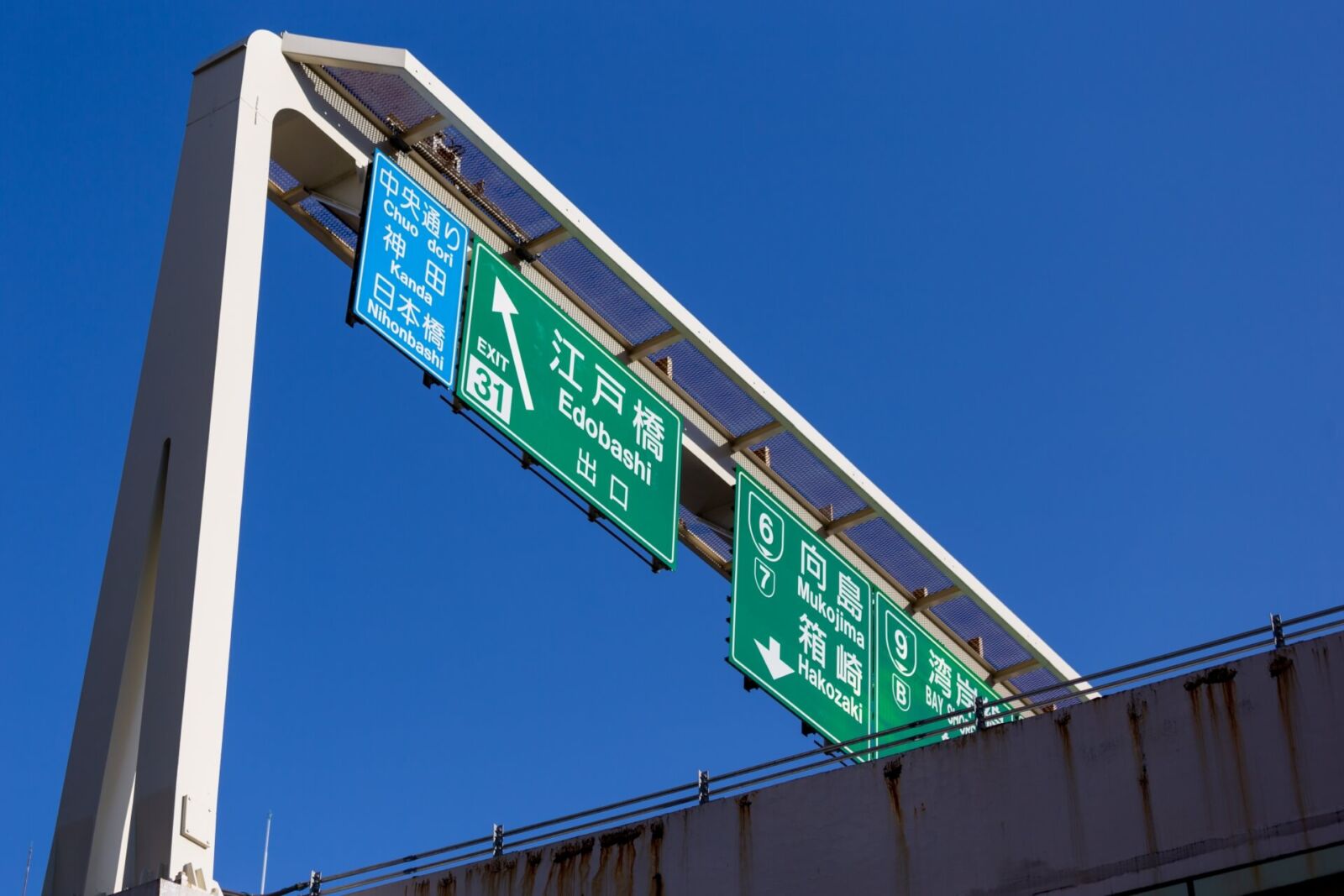
To access and exit the expressways, you will need to drive through an ‘Interchange’ or ‘IC’, at which points toll booths are stationed to collect payment. Payment can be made in cash, by credit card or automatic using an ETC. The ‘E-Nexco Drive Plaza’ website allows you to calculate the distance, time and tolls applicable to your intended drive.
Electronic Toll Collection (ETC)
Most modern cars in Japan will be fitted for use of an Electronic Toll Collection (ETC) and when you rent a car here, you will likely have the option of including an ETC. By using an ETC you can drive through toll gates on the expressways without needing to pay.
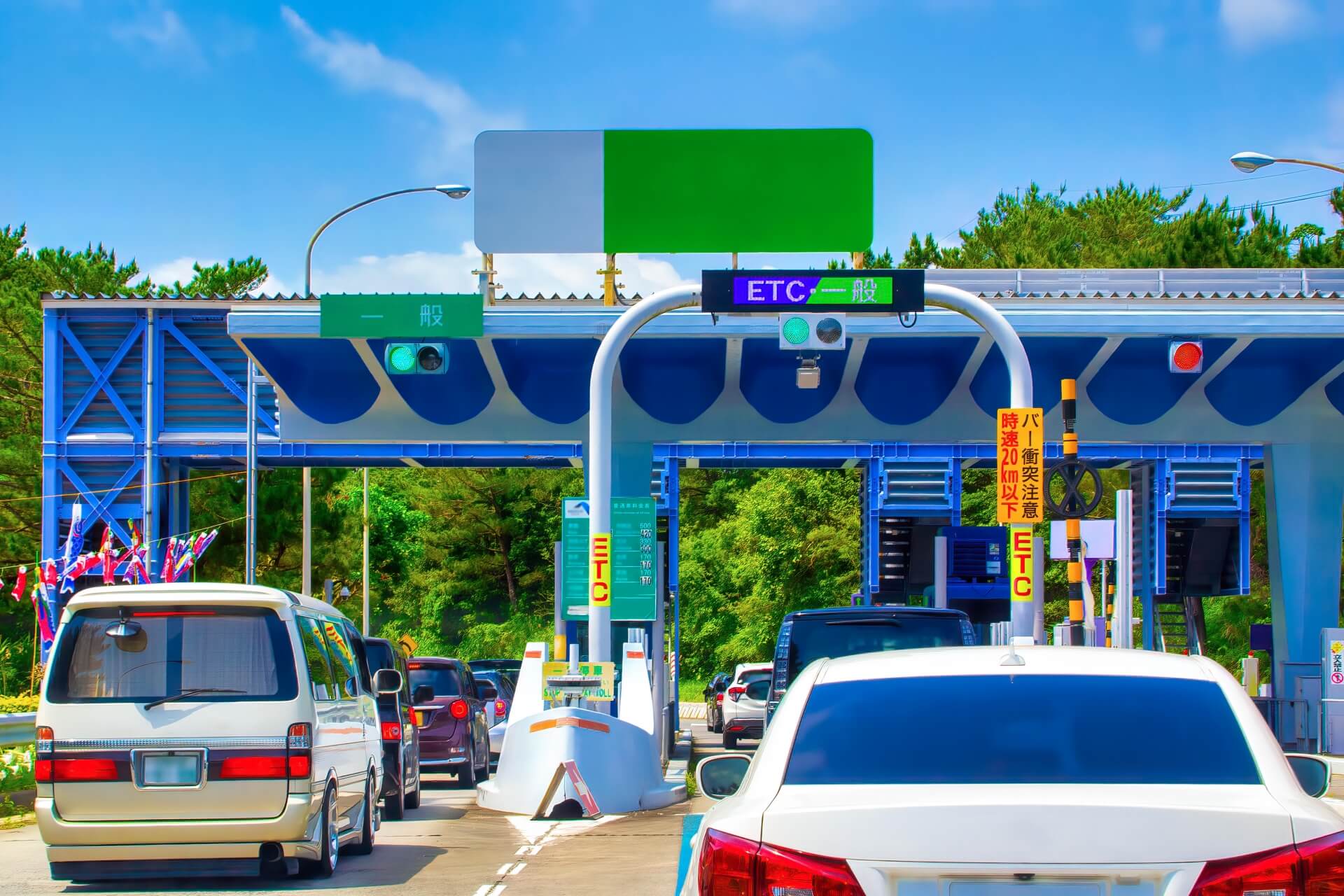
As you pass through your use i.e. the points at which you accessed and exited the expressway with be digitally recorded and used to calculate and charge your ETC automatically. This saves you the trouble of needing to stop and pay in cash or by card. Instead, the rental car company will tally the total and charge your credit card at some point. If you’re planning to cover large distance during which you will most likely use the expressways for extended periods, an ETC is worthwhile including.
LUGGAGE FORWARDING SERVICES
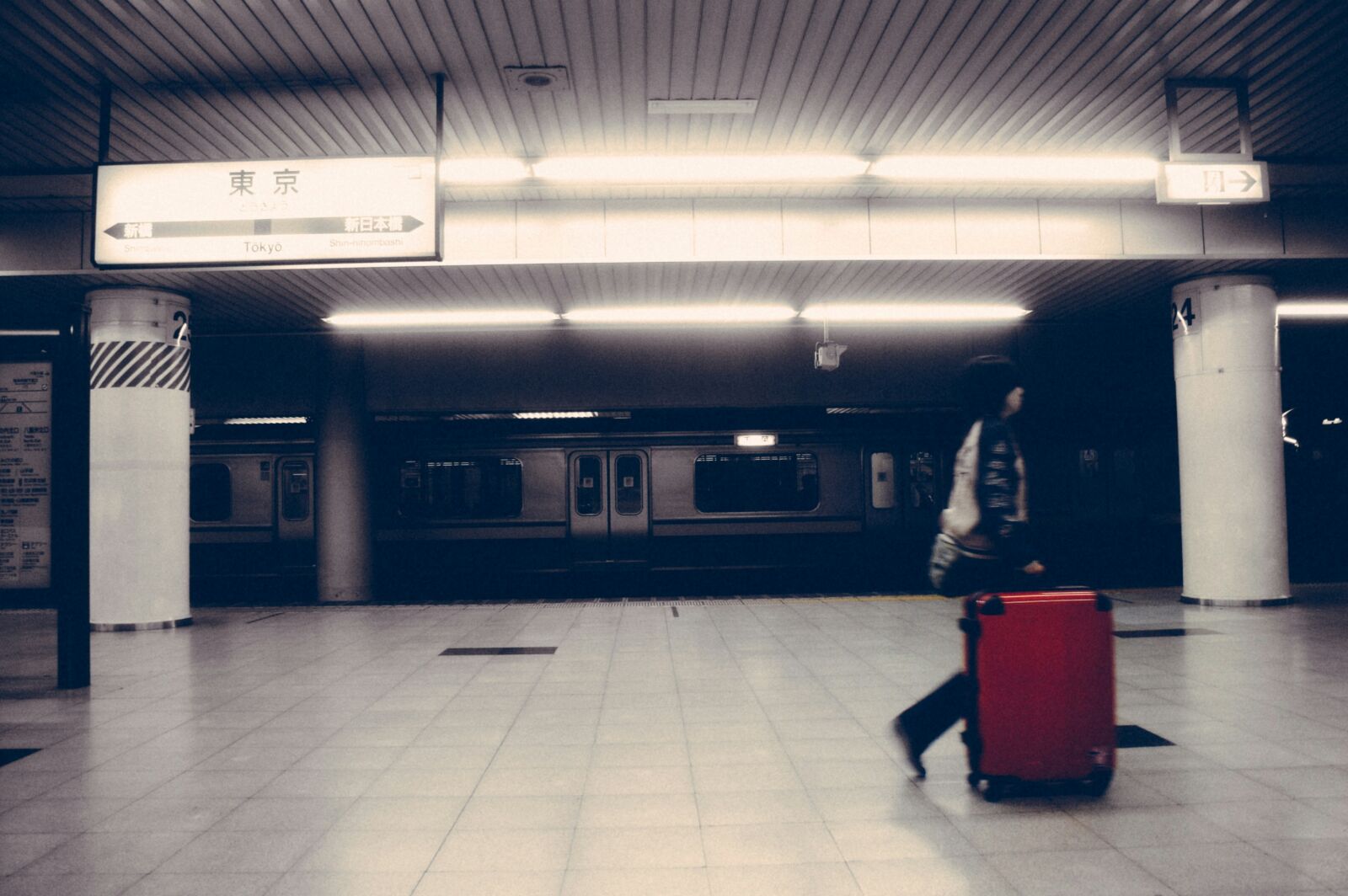
One of the most convenient services available in Japan, luggage forwarding takes a lot of the hassle and heavy-lifting out of moving around. Often surprisingly cheap and amazingly fast, you can arrange to have your luggage forwarded ahead of you to the airport, you next hotel or to any other destination – freeing you up to travel light.
Click the link below to learn more about forwarding your luggage:





